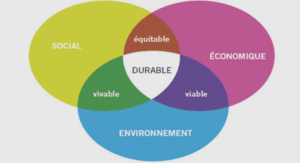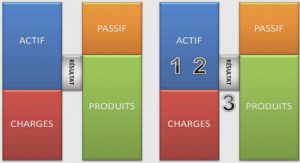Contamination des logements français en
composés organiques semi-volatils en phase
particulaire
Chemical analysis Reagents and chemicals
Certified standards of aldrin, 4,4’-DDE, dieldrin, α-endosulfan, endrin, -HCH (lindane), chlorpyrifos, diazinon, dichlorvos, cyfluthrin, cypermethrin, deltamethrin, permethrin, tributylphosphate, acenaphthene, anthracene, benzo(a)pyrene, fluoranthene, fluorene, phenanthrene, PCB 77, 105 and 126, butylbenzyl phthalate (BBP), di-n-butyl phthalate (DBP), di(2-ethylhexyl) phthalate (DEHP), diethyl phthalate (DEP), diisobutyl phthalate (DiBP), diisononyl phthalate (DiNP), bisphenol-A, fenpropathrin (surrogate standard), methoprotryne (surrogate standard), 4-n-amylphenol (ISTD) and 2,3,4-trichloronitrobenzene (TCNB, ISTD) were purchased from Dr. Ehrenstorfer GmbH (Augsburg, Germany). Purity of certified standards was above 97%, except for permethrin (94%). Acetone and dichloromethane (DCM) (PLUS-for residual pesticide analysis) were purchased from Carlo Erba Reagents (Val-deReuil, France). Individual standard stock solutions (1 g/L) were prepared in acetone by accurately weighing 25 mg (± 0.1 mg) of certified standards into 25 mL volumetric flasks and stored at -18° C. Nonane solutions (50 mg/L) of BDE 28, 47, 85, 99, 100, 119, 153 and 154, and toluene solutions of BDE 209 (50 mg/L) and 13C-BDE 209 (25 mg/L) were purchased from Wellington Laboratories (Guelph, ON, Canada). Cyclohexane solutions (10 mg/L) of galaxolide (HHCB) and tonalide (AHTN) were obtained from Dr. Ehrenstorfer GmbH (Augsburg, Germany). A mixture (PCB Mix 21) containing 10 mg/L of 8 PCBs (PCB 28, 31, 52, 101, 118, 138, 153 and 180) in cyclohexane was supplied by Dr. Ehrenstorfer GmbH (Augsburg, Germany). Calibration solutions were prepared by appropriate dilution of individual standard stock solutions and commercial solutions in DCM. N-methyl-n-(trimethylsilyl) trifluoroacetamide (MSTFA, derivatization reagent) was supplied by ULTRA Scientific (North Kingstown, RI, USA). The Standard Reference Material SRM 2585 (Organic Contaminants in House Dust) was purchased from the National Institute of Page 106 Standards and Technology (NIST, Gaithersburg, MD, USA). Celite® 545 was purchased from Merck KGaA (Darmstadt, Germany). Chromabond® NH2 (aminopropyl modified silica) glass columns (3 mL / 500 mg) were purchased from Macherey-Nagel GmbH & Co. KG (Düren, Germany). Sample extraction After the addition of internal standards (ISTDs) (13C-BDE 209 and 4-n-amylphenol) and surrogate standards (fenpropathrin and methoprotryne) to each dust sample (200 mg of sieved dust (100 µm) mixed with 2,600 mg of Celite® 545), SVOC extractions were performed with DCM using an Accelerated Solvent Extractor ASE 350 (Dionex Corporation, Sunnyvale, USA). Organic extracts were concentrated to 10 mL at 30 °C under a nitrogen stream. A volume of 500 µL was transferred into a 1.5 mL amber glass vial, spiked with an ISTD solution (TCNB) and stored at -18 °C prior to analysis. This aliquot was dedicated to the quantification of bisphenol-A and the most concentrated compounds such as phthalates. The remaining 9.5 mL were concentrated to 1 mL and quantitatively transferred onto Chromabond® NH2 glass columns prewashed with 6 mL of DCM. Elution was performed with 5 mL of DCM. Organic extracts were then concentrated to 0.5 mL, spiked with the TCNB solution, transferred into a 1.5 mL amber glass vial and stored at -18 °C prior to analysis. These extracts were dedicated to the quantification of the less concentrated compounds. Determination Analyses of organic extracts for SVOCs other than bisphenol-A and BDE 209 were performed using a gas chromatograph (GC) Trace GC Ultra coupled to a mass spectrometer (MS) TSQ Quantum GC operated in electron impact ionization (EI) mode (70 eV) (Thermo Scientific). The GC system was equipped with a TriPlus Autosampler and a PTV (Programmable Temperature Vaporizing) injector. Calibration solutions and organic extracts were injected (1 µL) in splitless mode. Helium was used as column carrier gas at a constant flow rate of Page 107 2 mL/min. Chromatographic separation was performed on a Rtx-PCB capillary column (60 m length x 0.25 mm I.D., 0.25 µm film thickness) supplied by Restek (Lisses, France). The mass spectrometer (triple quadrupole) was operated in the Multiple Reaction Monitoring (MRM) mode and the two most sensitive and specific transitions were monitored for each compound. Organic extracts were analysed for BDE 209 using a 6890A GC system coupled to a 5975C MSD operated in EI mode (Agilent Technologies). The GC system was equipped with a 7683 Autosampler and a PTV injector. A volume of 10 µL was injected in solvent vent mode. Helium was used as column carrier gas at a constant flow rate of 1.5 mL/min. Chromatographic separation was performed on a DB-5ms capillary column (15 m length x 0.25 mm I.D., 0.25 µm film thickness) supplied by Agilent J&W. The mass spectrometer was operated in the Single Ion Monitoring (SIM) mode and the two most sensitive and specific ions of BDE 209 were monitored. Organic extracts were analysed for bisphenol-A following a derivation step (addition of MSTFA at room temperature with a minimum reaction time of 30 min) using a 7890A GC system coupled to a 5975C MSD operated in EI mode (Agilent Technologies). The GC system was equipped with a 7683 Autosampler and a Multi-Mode Inlet (MMI) injector. 2 µL were injected in splitless mode. Helium was used as column carrier gas at a constant flow rate of 1 mL/min. Chromatographic separation was performed on a DB-5ms capillary column (30 m length x 0.25 mm I.D., 0.25 µm film thickness) supplied by Agilent J&W. The mass spectrometer was operated in SIM mode and the three most sensitive and specific ions of bisphenol-A were monitored. Quality Assurance (QA) and Quality Control (QC) Analytical methods were previously validated in terms of accuracy and precision (Mercier et al., 2014). The limits of detection (LOD) and quantification (LOQ) are reported in Table S1. Page 108 Quadratic calibration curves were established for each compound by analysing at least five calibration solutions. Because of the diversity of the target compounds with very different chemical and physical properties, internal and surrogate standards were selected to match the physical and chemical properties of the analytes as closely as possible, covering volatility differences in particular. Fenpropathrin, methoprotryne, 13C-BDE 209 and 4-n-amylphenol were added prior to the extraction step and TCNB at the end of the extraction procedure. Fenpropathrin and methoprotryne were used as surrogate standards to monitor recoveries. 13C-BDE 209 was used as internal standard (ISTD) for BDE 209 and 4-n-amylphenol for bisphenol-A to monitor recoveries and guarantee that the derivatization reaction was complete. TCNB was used as ISTD for all the other target substances. One procedural blank sample (2,800 mg of Celite® 545) and one sample of the NIST standard reference material SRM 2585 (200 mg of SRM 2585 mixed with 2,600 mg of Celite® 545) were extracted and analysed as regular samples for every ten samples to assess whether the samples may have been contaminated during analysis, and to check for method accuracy, respectively. To minimize procedural blank contamination, glass materials and stainless-steel cells were solvent-rinsed prior to use and plastic materials were avoided. Despite these precautions, some compounds such as phthalates and tributylphosphate were detected in the procedural blank samples. As concentrations in a procedural blank sample never exceeded 25% of concentrations in a sample from the same batch, concentrations reported here were not corrected for procedural blank concentrations. Measured concentrations (arithmetic mean) in SRM 2585 were compared to indicative, reference or certified concentrations available for some PAHs, PCBs, chlorinated pesticides, PBDEs, synthetic musks, phthalates, pyrethroids and organophosphorous pesticides. Results are summarized in Table S2.
Contamination en COSV des particules en suspension dans les logements français
Matériel et méthodes
Les prélèvements de particules ont été réalisés en 2003-2005, dans le cadre de la campagne nationale « LogeŵeŶts » de l’Oďseƌǀatoiƌe de la ƋualitĠ de l’aiƌ iŶtĠƌieuƌ ;OQAIͿ, daŶs uŶ ĠĐhaŶtilloŶ de 567 logements représentatifs du parc des résidences principales en France métropolitaine continentale (Kirchner et al., 2007). La localisation des 567 logements instrumentés est visualisée sur la Figure 5. Figure 5 : Localisation géographique des 567 logements enquêtés dans le cadre de la campagne nationale « Logements » de l’Oďseƌǀatoiƌe de la ƋualitĠ de l’aiƌ iŶtĠƌieuƌ Les prélèvements ont été effectués avec un MiniPartisol (modèle 2100) durant une semaine complète daŶs le sĠjouƌ des logeŵeŶts, peŶdaŶt des pĠƌiodes d’oĐĐupatioŶ pƌĠdĠfiŶies, de ϭϳhϬϬ à ϬϴhϬϬ les jours de semaine et 24h/24 les samedis et dimanches. Avec un débit de prélèvement fixé à 1,8 L/min, le volume de prélèvement cible était de 13,3 m3 pour une durée cumulée de 123 heures. Les filtres utilisés étaient des membranes Téflon de 37 mm de diamètre avec une bague support en PMP (polyméthylpentène) et une porosité de 2 µm. Les filtres ont été congelés immédiatement après pesée pour garantir leur conservation. Page 120 AfiŶ de disposeƌ d’uŶe ƋuaŶtitĠ de paƌtiĐules la plus importante possiďle, Đe Ƌui peƌŵet d’optiŵiser les limites de quantification, les filtres ayant collecté la fraction PM10 (particules de diamètre médian inférieur à 10 µm) ont été préférés aux filtres ayant collecté les PM2,5 (particules de diamètre médian inférieur à 2,5 µm). Sur les 297 filtres valides, Ϯϴϱ ĠtaieŶt dispoŶiďles pouƌ l’aŶalLJse des COSV. Compte tenu des gammes de concentrations différentes attendues, chaque filtre a été découpé en quarts, pƌĠalaďleŵeŶt à l’aŶalLJse. Le premier quart de filtre a été dĠdiĠ à l’aŶalLJse des ĐoŵposĠs à l’Ġtat de tƌaĐes, le deudžiğŵe à l’aŶalLJse des ĐoŵposĠs les plus foƌteŵeŶt ĐoŶĐeŶtƌĠs comme les phtalates, les HAP et les muscs. Les troisième et quatrième quarts étaient utilisés uniquement dans les Đas où l’aŶalLJse suƌ uŶ deudž pƌeŵieƌs Ƌuaƌts deǀait ġtƌe ƌeproduite. Les analyses ont été réalisées par thermodésorption associée à la chromatographie en phase gazeuse couplée à la spectrométrie de masse en tandem (TD-GC/MS/MS). L’application des poids de sondage ;i.e. l’iŶǀeƌse de la pƌoďaďilitĠ d’ġtƌe tiƌĠ au soƌt lors de l’ĠĐhaŶtilloŶŶageͿ à chacun des 285 logements a peƌŵis d’edžpƌiŵeƌ les ĐoŶĐeŶtƌatioŶs ŵesuƌĠes à l’ĠĐhelle du paƌĐ des ƌĠsideŶĐes pƌiŶĐipales de FƌaŶĐe ŵĠtƌopolitaiŶe ĐoŶtiŶeŶtale. Compte tenu de l’aŶalLJse des filtres PM10 de 285 logements sur les 567 instrumentés, les poids de sondage ont dû être corrigés. 3.2 Résultats et discussion Les ƌĠsultats oďteŶus ŵoŶtƌeŶt Ƌue ϯϱ des ϲϲ COSV ƌeĐheƌĐhĠs soŶt pƌĠseŶts daŶs l’aiƌ d’au moins un logement sur deux. Les 13 HAP recherchés, 4 phtalates (BBP, DEHP, DiBP et DiNP) et le triclosan sont dĠteĐtĠs daŶs plus de ϵϱ % des logeŵeŶts. Quatƌe COSV Ŷ’oŶt jaŵais ĠtĠ dĠteĐtĠs : Đis-chlordane, heptachlore, BDE 119 et PCB 126. Les concentrations sont très hétérogènes et vont de quelques µg/m3 pour le DEHP et le DiNP à quelques pg/m3 pour les PCB, les PBDE, les alkylphénols et les pesticides organochlorés et organophosphorés. La ĐoŵpaƌaisoŶ aǀeĐ les doŶŶĠes de la littĠƌatuƌe ŵoŶtƌe Ƌue peu d’Ġtudes oŶt doĐuŵeŶtĠ les ĐoŶĐeŶtƌatioŶs eŶ COSV daŶs l’aiƌ des logeŵeŶts eŶ proportion de celles ayant renseigné les concentrations dans les poussières déposées au sol ou sur les surfaces. EŶĐoƌe ŵoiŶs d’Ġtudes se soŶt iŶtĠƌessĠes spĠĐifiƋueŵeŶt audž COSV eŶ phase paƌtiĐulaiƌe daŶs l’aiƌ des logeŵeŶts. Cette comparaison ne fait pas apparaître de spécificités françaises en termes de composés en présence ou de concentrations mesurées. Les exploitations détaillées sont présentées dans la publication soumise à Atmospheric Environment.
Semi-volatile organic compounds in the particulate phase in dwellings
A nationwide survey in France Corinne Mandin1,2,3,*, Fabien Mercier2,3,4, Olivier Ramalho1 , Jean-Paul Lucas1,5, Erwann Gilles2,3,4, Olivier Blanchard2,4, Nathalie Bonvallot2,4, Philippe Glorennec2,4 and Barbara Le Bot2,3,4 1University Paris-Est, Scientific and Technical Centre for Building (CSTB) / Observatory of Indoor Air Quality, Marne-la-Vallée, France 2 INSERM-U1085, Irset-Research Institute for Environmental and Occupational Health, Rennes, France 3LERES-Environment and Health Research Laboratory (IRSET and EHESP Technologic Platform), Rennes, France 4EHESP-School of Public Health, Sorbonne Paris Cité, Rennes, France 5LMBA, University of South Brittany, Vannes, France *Corresponding author: University Paris-Est, Scientific and Technical Centre for Building (CSTB) / Observatory of Indoor Air Quality, 84 Avenue Jean Jaurès, Champs-sur-Marne, 77447 Marne-la-Vallée Cedex 2, France. Tel.: +331 6468 8597; Fax: +331 6468 8823. E-mail address: corinne.mandin@cstb.fr Abstract Sixty-six semi-volatile organic compounds (SVOCs)—phthalates, polybrominated diphenyl ethers (PBDEs), polychlorinated biphenyls (PCBs), polycyclic aromatic hydrocarbons (PAHs), one pyrethroid, organochlorine and organophosphorous pesticides, alkylphenols, synthetic musks, tri-n-butylphosphate and triclosan—were measured on PM10 filters collected over 7 days during a nationwide survey of 285 French dwellings, representative of nearly 25 million housing units. Thirty-five compounds were detected in more than half of the dwellings. PAHs, phthalates and triclosan were the major particle-bound SVOCs, with a median concentration greater than 1 ng m-3 for benzylbutyl phthalate (BBP), di(2-ethylhexyl) phthalate (DEHP) and di-iso-nonyl phthalate (DiNP) and greater than 0.1 ng m-3 for triclosan, benzo(a)anthracene, benzo(a)pyrene, benzo(b)fluoranthene, benzo(g,h,i)perylene, and indeno(1,2,3-c,d)pyrene. For most of the SVOCs, higher concentrations were found in the dwellings of smokers and during the heating season. The concentrations of banned SVOCs—namely, PCBs and organochlorine pesticides—were correlated. Permethrin, 4-tert-butylphenol and bisphenol-A showed no correlation with the other SVOCs and seemed to have their own specific sources. Most SVOCs were positively associated with PM10 concentration, suggesting that any factor that raises the mass of suspended particulate matter indoors also increases the exposure to SVOCs through inhalation.
SOMMAIRE |




